How to Dress for Your Season: A Cool Winter Style & Fashion Guide

Key Takeaways
- True Winter lives for cool, high-contrast color. Opt for crisp, blue-based colors with no yellow undertones and anchor ensembles with true white and true black for immediate definition.
- Give priority to pure, saturated colors that remain vivid against the skin. Jewel tones and icy shades work best, anything dusty, earthy or warm will make you look dull.
- Unless you're a true winter palette, check your coloring for confirmation. Cool undertones, stunning eye clarity and cool dark hair are usually indicative of True Winter – get a professional analysis or take a trusted online quiz if uncertain.
- Construct your closet out of cool neutrals initially. Depend on true black, true white, charcoal and navy and then pop statement colors like emerald, sapphire, ruby and icy blue for impact.
- Make contrast stand out in your outfits, makeup and accessories. Match vibrant colors to clean neutrals, select sleek, architectural fabrics, and silver metals and cool make-up to maintain balance.
- Project confidence and cohesion with your palette. We wear our finest hues in our finest moments — carry them through to complexion makeup, to accessories and to environment, eschew warm tones that disrupt the cool equilibrium.
🌸 Discover Your Seasonal Color Analysis
Ready to discover your seasonal color type? Take our comprehensive seasonal color analysis to identify whether you're a True Winter or another seasonal type. Get personalized color recommendations that enhance your natural beauty.
Take Seasonal Color Analysis →True Winter palette combines cool, high-contrast colors with blue-based undertones. It revolves around bracing colors such as icy pink, cobalt, emerald and jet black, which are balanced by bright white and charcoal.
Skin reads cool, hair leans dark and eyes show clear contrast, which helps these shades pop. To compose ensembles, combine crisp neutrals with vibrant highlights.
For lipstick, cool reds and raspberries. Ahead, some easy tests, color swatches, and mix-and-match tips that keep selections simple.
📚 Recent Articles
What defines the true winter palette
A cool, clear range of blue undertones and high chroma colors, supported by true white and true black, creates a bright **winter color palette** that spans from the lightest lights to the darkest darks for dramatic contrast.
1. The core principle
True Winter is all about cool and high contrast. Think crisp, clear colors that still pack a punch when worn near the face. This palette eschews warmth and muddiness, so its colors never wander into beige, olive or golden ground.
Pure, unmuted shades are key as they keep features bright and defined. This is the 'true' winter of traditional seasonal **color analysis**, the standard for frosty, profound and intense. Many True Winters show a "Snow White" effect: dark hair, light skin, overt coolness with a rosy cast, and eyes that hold clarity rather than warmth.
2. The color properties
* Properties: high saturation, strong clarity, blue-based undertone. Colors come across cool, deep and dramatic.
* Families: jewel tones (sapphire, emerald, ruby), icy shades (ice pink, ice blue, silver), deep dramatic hues (charcoal, ink navy, black).
* Never dusty, muted, or earthy – no khaki or mustard or tomato red.
| Palette | Temperature | Brightness | Depth | Best Neutrals | Notes |
|---|---|---|---|---|---|
| True Winter | Cool-neutral, blue-based | High clarity | Full range, extreme contrast | True black, true white, charcoal, cool navy, silver | Most balanced "cool + bright + deep" |
| Bright Winter | Cool-leaning, slightly spring-influenced | Very bright | Medium to deep | Cool navy, bright charcoal, optic white | A touch cleaner/brighter; tiniest warmth |
| Dark Winter | Cool-leaning, slightly autumn-influenced | Moderately bright | Very deep | Soft black, deep charcoal, ink brown (cool) | A bit richer/darker; slight warmth in depth |
3. The undertone
Blue undertones characterize every True Winter color. No yellow or golden cast appears, even in reds or greens. That cool base enhances the inherent brightness of True Winter skin, which is frequently quite cool with transparent blue undertones.
Warm shades fade quick, so bypass camel, warm taupe, coral and gold metallics.
4. The contrast level
High contrast highlights facial structure and eye clarity. Black with white, sapphire with silver, or fuchsia with cool navy all echo the natural value gap many True Winters have: dark hair (levels 1N–5N) against light, cool skin with rosy hints.
Use these pairings:
- True black + optic white
- Charcoal + ice blue
- Emerald + cool navy
- Ruby + silver
- Fuchsia + graphite
- Sapphire + white
- Ink navy + ice pink
5. The sister seasons
Bright Winter and Dark Winter flank True Winter. True Winter is cooler and more neutral. Bright Winter is cooler and a bit brighter. Dark Winter is deeper and a bit more saturated.
True Summer, a cool neighbor, has little depth or contrast and prefers softer, grayer tints. For personal ID, check three factors: undertone temperature, feature value range, and chroma of hair, skin, and eyes.
True Winters typically have dark natural hair (black to medium brown), cool blue-leaning skin and are most suited to cool ash hair tones, dark cherry, cool blondes, charcoal gray, sapphire blue and silver.
How to identify your season
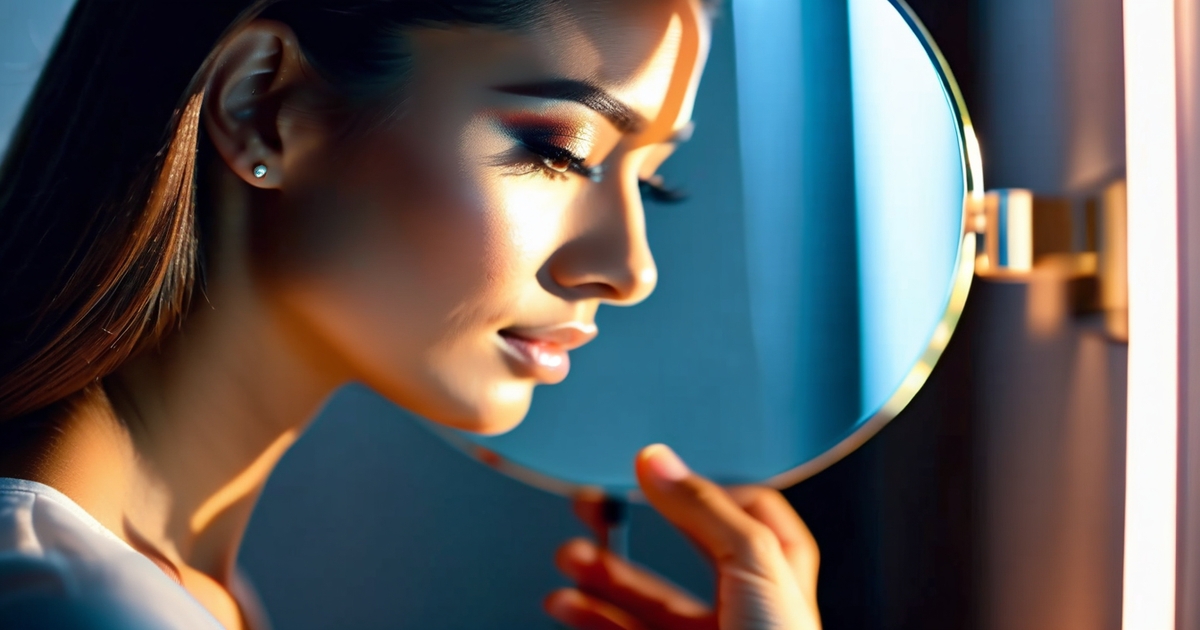
Seasonal color analysis checks three things: undertone (temperature), value (light to dark), and chroma (soft to vivid) across skin, eyes, and hair. True Winter occupies the cool quadrant with sharp, high-contrast characteristics and vivid saturation.
Begin with undertone tests, check how your features respond to color, then verify with contrast. If you're not sure, try an online quiz or book a pro draping to eliminate the guesswork.
Your skin
True Winter skin is cool-toned—pink, blue, or cool neutral. It can be fair, medium, or deep but the base remains cool. The vein test helps: blue or purple veins often point to cool undertones, while green suggests warmth.
Observe how silver vs. Gold looks on you; silver tends to flatter True Winters. Seek an ethereal, almost porcelain or polished appearance in cool, clear hues. Icy pink, cobalt and black-and-white can all make the skin read smooth and bright.
Warm, earthy tones—camel, mustard, rust—tend to mute the face, create shadows, or appear sallow. If your skin turns ruddy in warm reds or looks grey in beige, that's a red flag for Winter shun.
Trial with scarves underneath daylight (roughly 1-2 meters away from a window). Cool, saturated hues will make your skin appear even and awake. If so, you could be in the Winter family.
Your eyes
True Winter eyes may appear icy and distinct, like crystalline water or refined onyx. The whites are stark, providing a powerful rim and snap against the iris. This high contrast is key—it backs up the cool, deep, saturated palette.
Common colors include:
- Cool blue or blue-grey
- Icy hazel with a grey cast
- Deep brown, almost black
- Dark grey or charcoal
If your hazel shifts cool and appears steel-toned instead of golden, it leans Winter. Jewel tones close to the face will sharpen the iris ring and make the whites pop. If warm tones swamp the eye color, that's evidence for a cool reading.
Your hair
True Winter hair skews dark and cool: black, blue-black, dark ash brown, or deep chocolate without warmth. Brown hair with cool undertones—ash brown or dark chocolate—work well.
A few True Winters are lighter because of greying—the transition registers silvery, not yellow. Stay away from warm tones such as honey, caramel or copper highlights. They battle your sleek skin, making it drab.
If you color, match the palette: espresso, blue-black, cool mocha, or ash tones. Even subtle toner choices matter—a violet-ash gloss can keep brass at bay. When hair, skin, and eyes read cool and saturated together, the entire visage appears sharp and vibrant. That's the True Winter cue.
Building your cool winter style
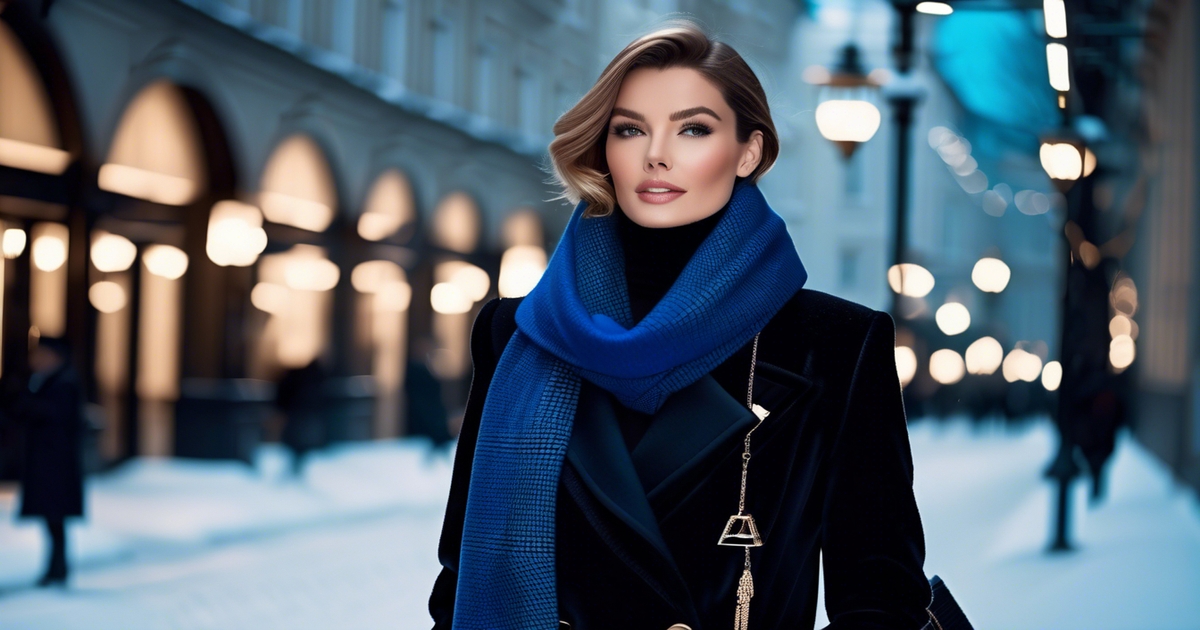
A true winter color palette is fueled by cool tones, sharp lines, and high contrast. Think clean shapes, rich depth, and icy light. Go metric sizing when you size up lengths and layer in clarity, not clunky bulk.
Foundational neutrals
Begin with true black and white, charcoal grey and navy blue. These four make up the foundation that keeps looks streamlined and simple to put together.
Build most looks around two neutrals at once, like navy with white or charcoal with black then add in a little color pop. This maintains the contrast between pieces nice and high and the palette nice and cohesive.
Select cool undertones exclusively – bypass beige, warm greys, and brown, which can mute true winter's sharp edge. A capsule could be: black wool coat, navy suit, white shirt, charcoal knit, dark denim (cool indigo), black boots, and a navy scarf.
Mix-and-match is almost fail-proof, and it backs up that timeless black-and-white POP this season wears so well. Note hair and makeup cues: dark ash brown to cool black hair enhances contrast. Your cool-toned pink or purple makeup keeps the look sharp.
Statement colors
Jewels tones provide drama without the shouting. Emerald green, sapphire blue and ruby red are all year round winners and hold their richness beside black or navy.
Icy shades add light: try icy blue, icy pink, or icy lavender in a shirt or scarf for a fresh, modern touch. Team one pop shade with one neutral to stay clear of oversaturation — imagine sapphire shirt beneath a graphite blazer, or emerald sweater with ivory pants.
Classic reds, such as cherry red, true red or crimson, provide a powerful pop and flatter cool winter skin. For quick reference: emerald, sapphire, ruby, amethyst, cobalt, fuchsia, icy blue, icy pink, icy purple, and true red.
Balance dark with light: anchor deep navy or black with an icy tint to keep the face bright.
Fabric and texture
Choose sleek, clean finishes that reflect the palette's purity. Wool suiting, fine merino, silk twill, silk satin, and quality cotton shirting keep color clean and robust.
Heavy fuzz and slub—mohair, boucle, brushed flannel—can mute jewel tones and blur edges. Add a cool sheen in small hits: silver hardware, chrome buckle, a satin lapel, or a metallic bag in gunmetal.
Structured wool coats (1–2 cm thick) and sharp cotton poplin shirts keep lines clean.
Prints and patterns
Go for medium to large-scale prints with contrast — black and white stripes, navy and white checks, cobalt and charcoal abstracts.
Be certain that each shade corresponds to the actual winter spectrum. Avoid warm beiges, caramel and soft brown. Geometric, abstract and bold graphic patterns trump watercolor florals or smeared ombré any day.
Test prints near your face in daylight, and against a color fan. If your eyes appear brighter and skin appears even, you're in the zone.
The psychology of your colors
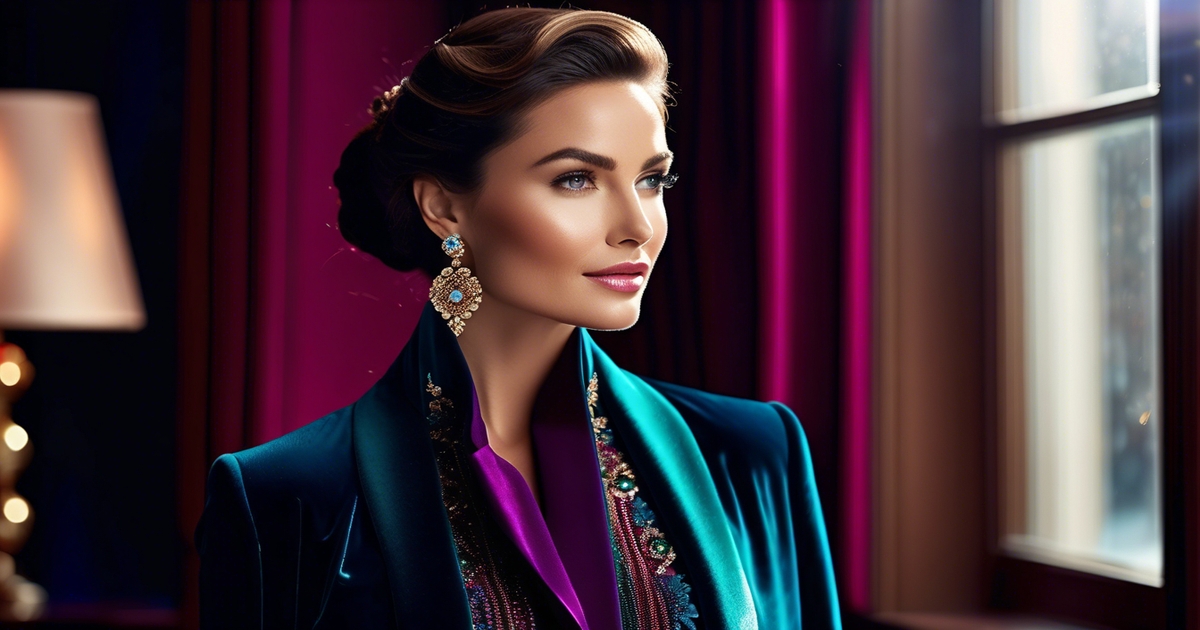
True Winter depends on cool, deep, and highly saturated colors that appear clear and crisp. These colors often signal sophistication and edge, while shaping mood: some hues calm, others spark energy. When they complement your undertone, eye depth, and hair contrast they tend to lift features and confidence.
The impact is intimate and individual, but a lot of people discover the spectrum a reliable means to communicate their soul.
Projecting confidence
High-contrast color sends a clear message: strength, focus, decisiveness. Imagine ink black with optic white, cobalt with charcoal or fuchsia alongside navy. Cool undertones provide that hard-to-miss clarity, which aids words in landing clean.
In the office, test bold pairings in simple shapes: a black suit with an icy-blue shirt, a deep plum dress with a white belt, or a charcoal blazer over a ruby shell. These pairings appear sleek, not brash, and come across as deliberate.
School environments wash away faint hues, yet True Winter maintains its sharpness. A cobalt scarf in a sea of beige, a crisp white shirt under black knit or a berry lip in a meeting can pull focus without strain.
On those key days—interviews, pitches, ceremonies—wear your sharpest colors close to your face. Most experience an immediate change in body language and cadence, as being visible tends to boost confident communication.
Creating harmony
When clothes harmonize with your innate coloring, the eye rests. You look like you, not your clothes. The coolness at the base of True Winter injects a dose of crispness that makes details appear sharp.
This balance tends to illuminate the appearance of your complexion and awakens your eyes. Icy pink can illuminate a cool undertone. Sapphire can send dark irises a-flashing. True red can lift a cool lip.
Build a cohesive look with two or three colors: black and white with one accent like emerald, charcoal, icy gray, and amethyst, navy with silver and a touch of magenta. Stay in tune by keeping metals cool—silver, platinum, gunmetal.
Experiment with mini-tests. Trade a warm beige top for icy lavender. Swap camel for coal. Observe if it makes you feel alive or bored. Data is your mirror.
Beyond your wardrobe
Extend the palette to makeup: blue-red lipstick, cool pink blush, slate or charcoal liner. Accessories have weight as well—black leather shoes, silver watch, emerald studs.
Even a cobalt phone case can keep your roster tight and right! For parties, simultaneously, the palette produces a cohesive scene. Think winter-white linens, black accents, crystal glass and deep berry blooms.
It sounds modern and dramatic, but serene. Select everyday items in your top tones—water bottle, notebook, headphones. Tiny pops of rhyme here and there accumulate and carry you through the day!
The psychology of color is subtle and individual, but a cool, saturated environment tends to feel crisp, alert, attentive. Apply that advantage where you need it most.
Mastering your cool winter clothes
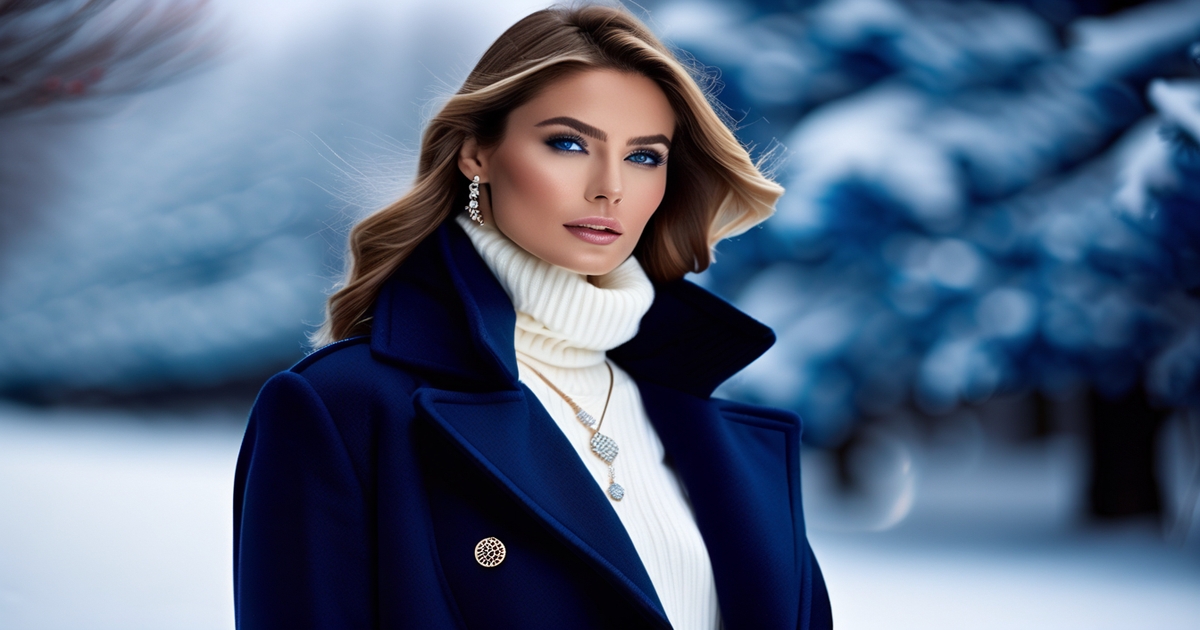
True winter individuals flourish with clean, cool, and high-contrast winter colors. Hang on to your cool—makeup, hair colour, fabrics, and accessories—to look sharp and put together. Let your true winter colour palette be your compass, creating a capsule that functions 365 days with weight shifts, not color shifts.
Makeup essentials
Begin with cool or neutral toned base makeup. Search for foundation that is daylight accurate and doesn't oxidize warm. Pick blush in cool pink, berry or plum – a soft raspberry reads fresh, while a blue-based fuchsia lifts the face without going ruddy.
Eyes sparkle with cool neutrals and jewel hues. Slate, charcoal, gunmetal, taupe-without-brown, icy grey, navy, cobalt and deep sapphire provide crisp contrast. For night, throw in a sharp line in black or midnight and a pop of silvery shimmer on the inner corner — the contrast befits true winter's clarity.
Lips complete the look. Blue-reds (crimson, cherry), magenta, cool rose, and vivid fuchsias fit the palette. For a more subtle daytime look, experiment with frosty pink tints or a translucent plum. Forget warm bronzer, apricot blush, terracotta or peachy nudes; they mute the cool symphony and can make skin look sallow.
Ideal hair colors
Genuine winter hair is most beautiful in cool, deep colors that mirror natural shadows. Black, blue-black, dark brown and cool ash brown maintain the crisp contrast and allow jewel tones to perch nicely near the face. If you tint, request ash and neutral bases, never gold or copper.
Warm accents–caramel, honey, or butterscotch–disrupt the cool cord and duel with your wardrobe and cosmetics. If you desire more dimension, cool lowlights, slate-tinted brunettes or a fine veil of ash lights placed off the hairline.
When gray emerges, embrace silver or icy hues. A lustrous steel or pewter glaze feels modern and stylish. Confirm with a bona-fide winter swatch card before any switch-up. It sticks you right inside the cool, clear spectrum.
Jewelry and metals
Metals with a cool flash complement the skin. Silver, platinum, white gold and stainless all just feel right. They reverberate icy whites and steel blues in your closet and make skin look radiant rather than jaundiced.
Jeans need sharp indigo depth. Diamonds, white sapphires, sapphires, emeralds, rubies, amethyst, onyx and jet provide saturated colour to match winter's intensity. Steer clear of yellow gold, copper, bronze and honey pearls; they lean warm and conflict with cool undertones.
Ideal picks for easy shopping:
- Metal: silver hoops, platinum studs, white-gold chain.
- Statement: sapphire or emerald drops, jet bead necklace.
- Everyday: steel watch, black leather strap, diamond solitaire.
- Dress: crystal choker, onyx cufflinks, ruby accent ring.
Invest in clear, cool wardrobe anchors: icy white tees, steel blue shorts, cool plum scarf, a steel blue or cool pine blazer, chinos in cool grey or jet black, and polos in bright, cool hues.
Turn fabrics with the seasons—linen and poplin for the heat, wool and cashmere for the cold—while maintaining a consistent color story. Sophisticated color combos such as cobalt with charcoal, emerald and icy white or magenta and navy bring dimension.
Complete with ties, pocket squares, belts and bags in your cool collection. Pass over golden blondes, coppers, caramel in hair and clothing—choose cool, clear variants instead to remain coordinated and slick.
Common palette misconceptions
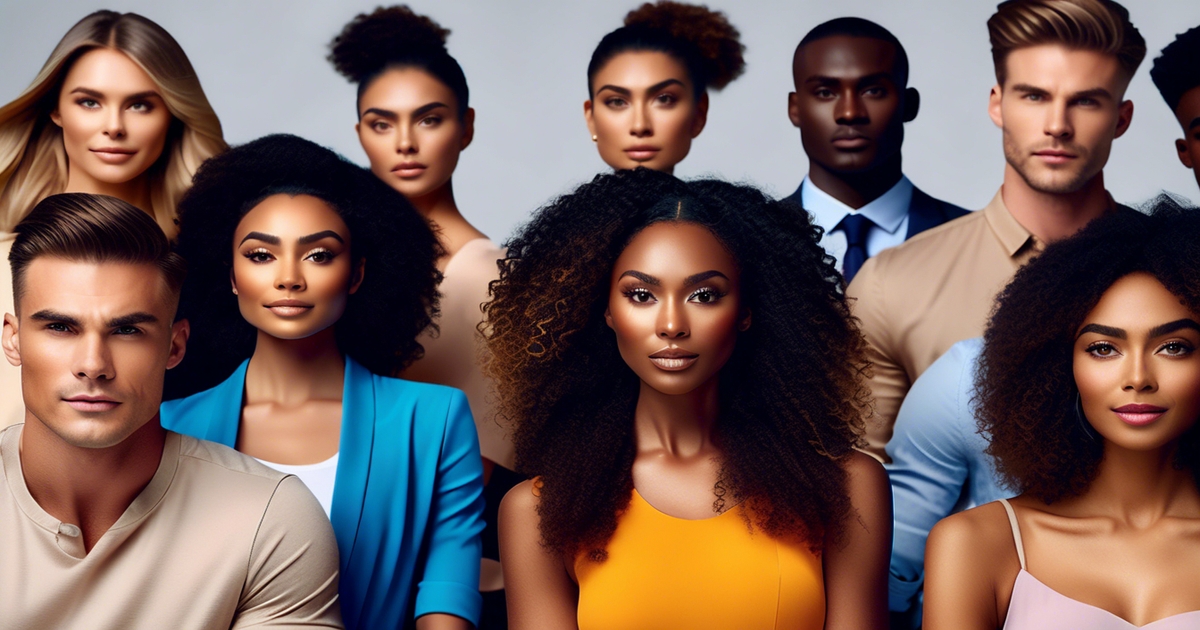
Real winter flops into the chilly, deep, and bright corner of the spectrum. It's a guide, not a cage. Think qualities, not palettes—cool undertone, high contrast, clear chroma—then pick colors that fit those qualities.
Not all cool colors are true winter. Precision is key. I watch people grab any cool shade and wonder why it appears flat. The what: true winter needs cool, blue-based hues that are crisp and vivid. The why: this palette has high contrast and a clear, icy quality.
The where: cobalt, fuchsia, icy pink, true black, and optic white are core. The how: skip dusty, gray-leaning cools like slate or smoky lavender; they belong to cooler-soft seasons. Try it with a white sheet beneath the face in daylight. If that color saps you or makes your features fuzzy, it's probably too diluted.
Remember, there are some seasonal colors that are universal—navy, charcoal, and a few reds can play broadly when the saturation and undertone is a match.
True winter cannot wear all of the dark or bright colors. Undertone gurus. Bright tomato red (warm) will fight the skin, while blue-red pops clean. Deep forest green (warm) muddies, emerald with a blue cast sings. Strive for cool brights and inky cool darks.
Makeup works the same way. Cool pink blush, blue-red lipstick and ash-toned brows provide lift and glow without warmth. Radiance doesn't require bronzer; cool light provides a fresh, awake appearance.
Mistaken for sister palettes all the time! True winter has borders with bright and dark winter. Bright winter injects a little warmth. The colors have a sunnier feel. Dark winter skews slightly muted and warm—imagine a deep, cool-warm blend like burgundy.
Genuine winter remains fully cool, top contrast, glass-clear. If it only works after heavy bronzer or warm gloss, it's probably a dark winter or bright winter color. Contrast is key: true winter handles stark black-and-white better than its sisters.
Hair and eye color, alone, do not determine your season. Look at the whole picture: skin undertone (cool-neutral for true winter), clarity (few overt golden tones), and value contrast between hair, skin, and eyes.
Subtle hair tweaks help more than big shifts. Cooler, ashy highlights or deeper cool brown can sharpen contrast without a drastic change. Your palette isn't etched in stone for life—changes in hair color or skin tone can push you over a borderline.
Style spectrum remains broad—wear near-naked black-and-white a day, then adorn yourself in jewel tones the following—and metals are malleable. Cool silver flatters, but steel, white gold or even mixed metals can work when the finish is sleek and cool.
Conclusion
Seal in your true winter palette, chilled and fresh. Consider crisp blue reds, frosted pink, ink black and bright white, cobalt and pine green. Skin appears bright. Eyes appear bright. Hair shines. There's the rapid gut check. A red lip in blue base can seal the deal. Whatever, a silver stud can as well.
To construct a reliable closet, rely on clean lines and bold contrast. Top it with shine — satin, silk or fine knit. Forgo warm beige and dusty. They mute your shine. For a quick jump into action, go with a navy coat, white tee, black jeans and cobalt scarf.
Prepared to put your tints to the test? Post a two top selfie, one cool and one warm and notice which one makes you pop.
Frequently Asked Questions
What is the True Winter color palette?
True Winter individuals embody a cool, deep, and high-contrast winter color palette. Their colors are icy, jewel-toned, and crisp, featuring pure white, true black, cobalt, emerald, and fuchsia, with blue undertones.
How do I know if I'm a True Winter?
Look for cool undertones and a high contrast between hair color, skin, and eye colors, as these are key features of a true winter individual. Silver jewelry complements this cool appearance better than gold, while warm colors can make you look drained. A good online color analysis will help verify your winter color palette.
What colors should True Winter avoid?
Steer clear of warm colors like beige, camel, and olive that can mute your appearance. Instead, opt for a bright winter color palette featuring crisp, cool, and saturated hues.
Can True Winter wear pastels?
Yes, if they're icy pastels. Seek out cool winter colors like ice pink, ice blue, and icy lavender. They need to feel crisp, not creamy or dusty.
What neutrals work best for True Winter?
Opt for true black, pure white, charcoal, cool navy, and cool gray from the winter color palette. Avoid warm browns and creams, as cool neutrals sustain contrast and make jewel tones pop.
How do I build a True Winter wardrobe?
Begin with a cool winter color palette as your foundation. Spritz on some jewel-tone tops and accessories to enhance your overall appearance. Clean lines, crisp contrasts, and just a touch of warm colors complete the winter look.
What makeup suits the True Winter palette?
Select cool products that complement your winter color palette. Opt for true black mascara and liner, cool pink or berry blush, and blue-red or fuchsia lips to enhance your overall appearance.